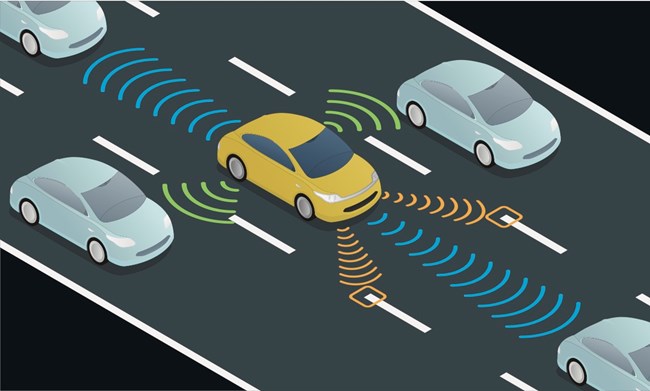We use cookies to ensure that we give you the best experience on our website. If you continue without changing your settings, we will assume that you are happy to receive all cookies on the Business Car website. However, if you would like to, you can change your cookies at any time

The start point for the best source of fleet information |
Fleets can benefit from driver assistance technology before full autonomy, AFP says
Date: 09 January 2023 | Author: Sean Keywood

Fleets should look beyond the future prospect of fully-autonomous vehicles when considering the uses of assisted driving technology, according to the Association of Fleet Professionals (AFP).
The organisation's chair, Paul Hollick, said that while it was becoming clear the promise of entirely self-driving cars was unlikely to materialise in the near future, other potentially useful - and even transformational - ideas were coming to fruition.
Hollick said: "General agreement seems to be emerging across the autonomous tech field that the target of full 'level five' autonomous driving is still some years away, if indeed its inherent problems can ever be solved.
"This is perhaps disappointing given the hype but fleets potentially have a lot to gain by looking beyond that setback. There is much that can be done with the related technology that is available and fleets should be both looking at its possibilities and also thinking about infrastructure to ensure its safe use.
"Especially, the UK appears to be more liberal than some other countries in terms of allowing this technology to be used on public roads, so there is a chance that we may effectively be asked to become early adopters - with both the risks and rewards that brings."
Hollick said that some fleets already operated vehicles with level 2 autonomy such as lane changing and self-parking systems and level 3, that allowed fully automatic driving on some roads such as motorways as long as the driver was ready to take control if needed, was not far away from production models.
He said: "Our view is very much that fleets need to be thinking about how they view these levels of assistance.
"Essentially, they rely on the driver intervening if the technology fails but it is all too easy to envisage situations where this handover does not happen. There needs to be serious examination of the risk management and duty of care implications."
Hollick warned that, because these driving modes may be soon available on cars that are entering production, there was a chance they may arrive on fleets almost by stealth.
He said: "[Fleet managers] need to know if vehicles with these levels of autonomy are being used on [their] fleet and ensure that drivers are familiar with the technology and how it works. There are very clear risks.
"However, this should not deter fleets from investigating and, where appropriate, accessing the potential advantages in terms of reducing driver stress and cutting accident rates.
"These assisted forms of driving could prove to be valuable in terms of the benefits they bring. They just need to be properly managed within a framework where drivers understand the limitations and their responsibilities as an employee and road user."
Hollick added that there were other intriguing possibilities that autonomous technology provided, such as the ability for fleets to access services that use remote driving.
"Our Future Mobility Committee recently saw a presentation from Fetch, which plans to use remote driving to deliver car club-style services, with trials underway in Milton Keynes. It's early days for this kind of tech but the potential is considerable.
"Certainly, remote driving appears to solve many of the problems inherent in higher levels of autonomy while delivering some of the most important advantages. There are a very wide range of potential fleet applications. For example, if hire cars can be delivered to the point of need at short notice without the need for a delivery driver to be present, that would be a massive advantage and open up pay-on-use car services to a much wider audience."











